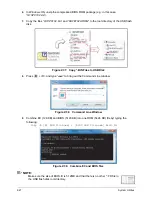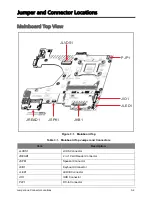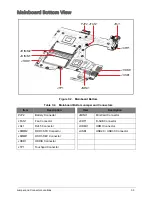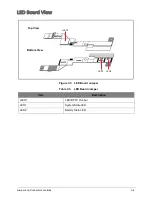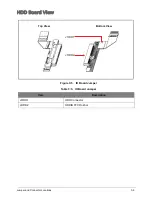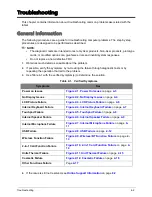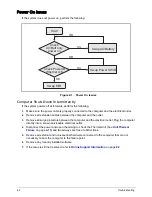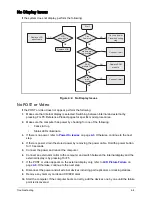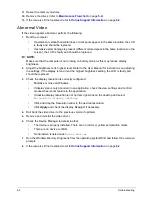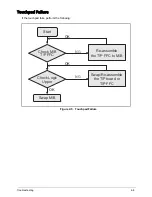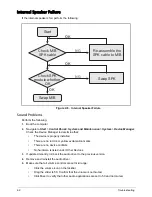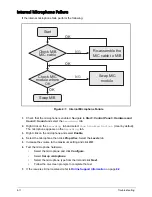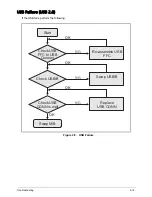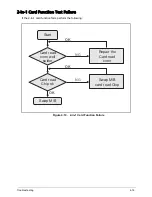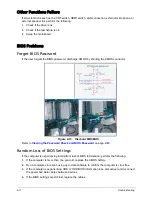
4-5
Troubleshooting
11.
Reseat the memory modules.
12.
Remove the drives (refer to
Maintenance Flowchart
on page
5-4
).
13.
If the issue is still not resolved, refer to
Online Support Information
on page
8-2
.
Abnormal Video
If the video appears abnormal, perform the following:
1.
Boot the computer.
•
If permanent vertical/horizontal lines or dark spots appear in the same location, the LCD
is faulty and should be replaced.
•
If extensive pixel damage is present (different colored spots in the same locations on the
screen), the LCD is faulty and should be replaced.
NOTE:
Make sure that the computer is not running on battery alone as this may reduce display
brightness.
2.
Adjust the brightness to its highest level. Refer to the User Manual for instructions on adjusting
the settings. If the display is too dim at the highest brightness setting, the LCD is faulty and
should be replaced.
3.
Check the display resolution is correctly configured:
•
Minimize or close all Windows.
•
If display size is only abnormal in an application, check the view settings and control/
mouse wheel zoom feature in the application.
•
If desktop display resolution is not normal, right-click on the desktop and select
Personalize Display Settings
.
•
Click and drag the Resolution slider to the desired resolution.
•
Click Apply and check the display. Readjust if necessary.
4.
Roll back the video driver to the previous version if updated.
5.
Remove and reinstall the video driver.
6.
Check the Device Manager to determine that:
•
The device is properly installed. There are no red Xs or yellow exclamation marks
•
There are no device conflicts
•
No hardware is listed under
Other Devices
7.
Run the Windows Memory Diagnostic from the operating system DVD and follow the on-screen
prompts.
8.
If the issue is still not resolved, refer to
Online Support Information
on page
8-2
.

